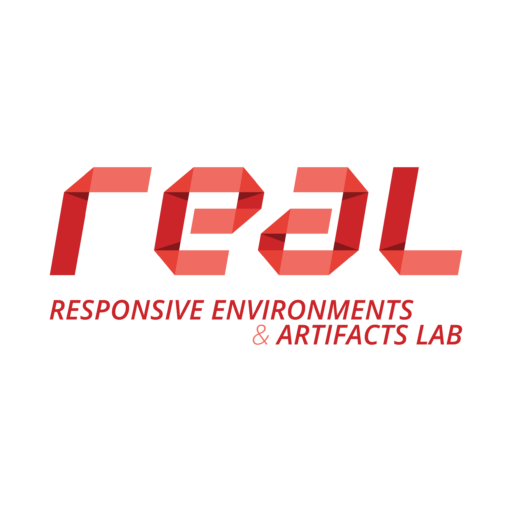PROJECT SYNTHIA
An Experiment in Emergent Design
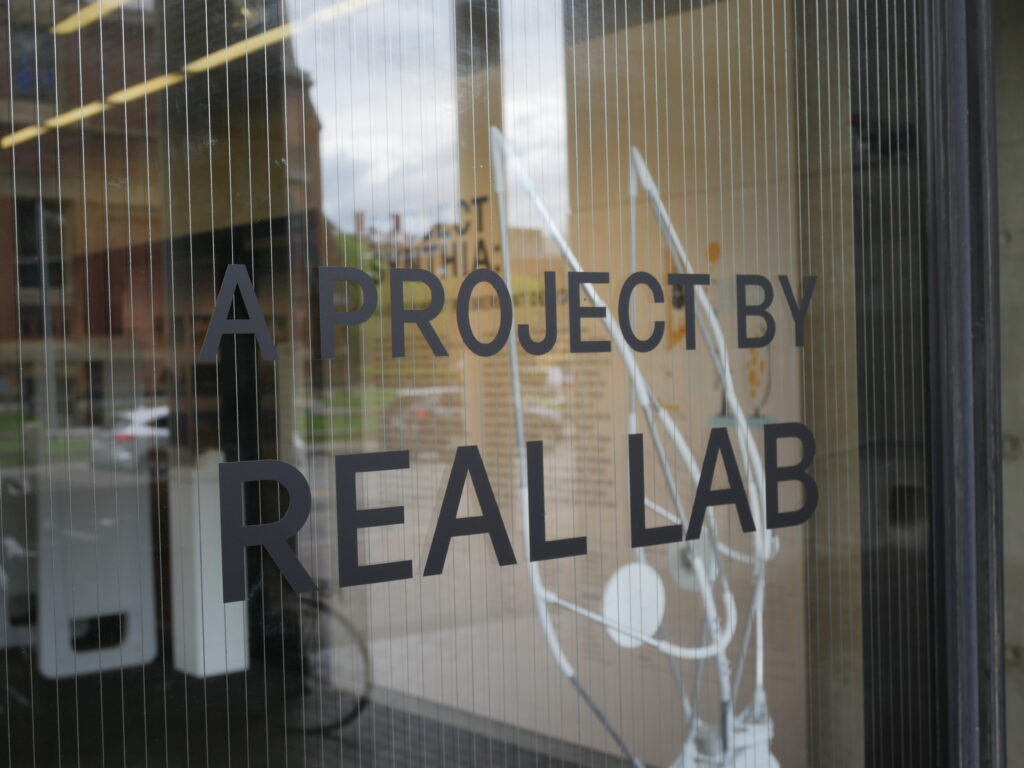
Project Synthia, by the Responsive Environments and Artifacts Lab (REAL) at the Harvard GSD, is a case study in emergent design methodology—an approach that treats collaboration as a dynamic system, where outcomes are not imposed but negotiated. Here, design is framed as an act of assembly, shaped by a multiplicity of voices—human, artificial, historical, and speculative—rather than a singular vision. This exhibition is not a fixed narrative but an evolving synthesis, reflecting the tensions and harmonies of interdisciplinary thought. Synthia emerges from the intersections of geology, futuring, cognitive science, physics, art, design, architecture, history, landscape architecture and generative AI—each contributing fragments to a larger, unresolved puzzle.
The exhibition draws inspiration from radical experiments in design methodology, from Bruno Munari’s Da cosa nasce cosa (from one thing comes another) to the interdisciplinary ethos of Gyorgy Kepes, Chicago’s New Bauhaus, and MIT’s Center for Advanced Visual Studies (CAVS). Like these predecessors, it challenges the notion of authorship and control, embracing uncertainty as a generative force.
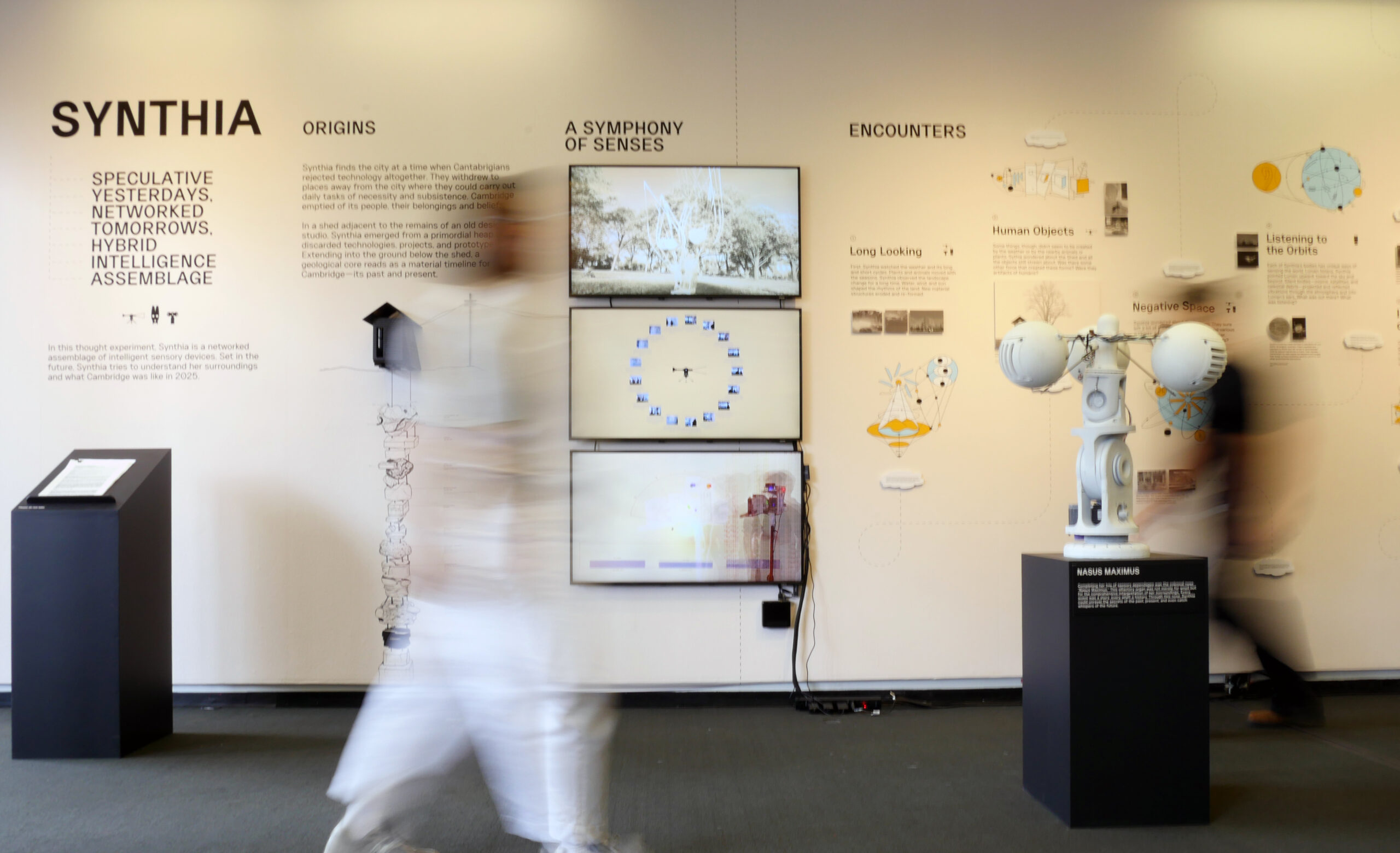
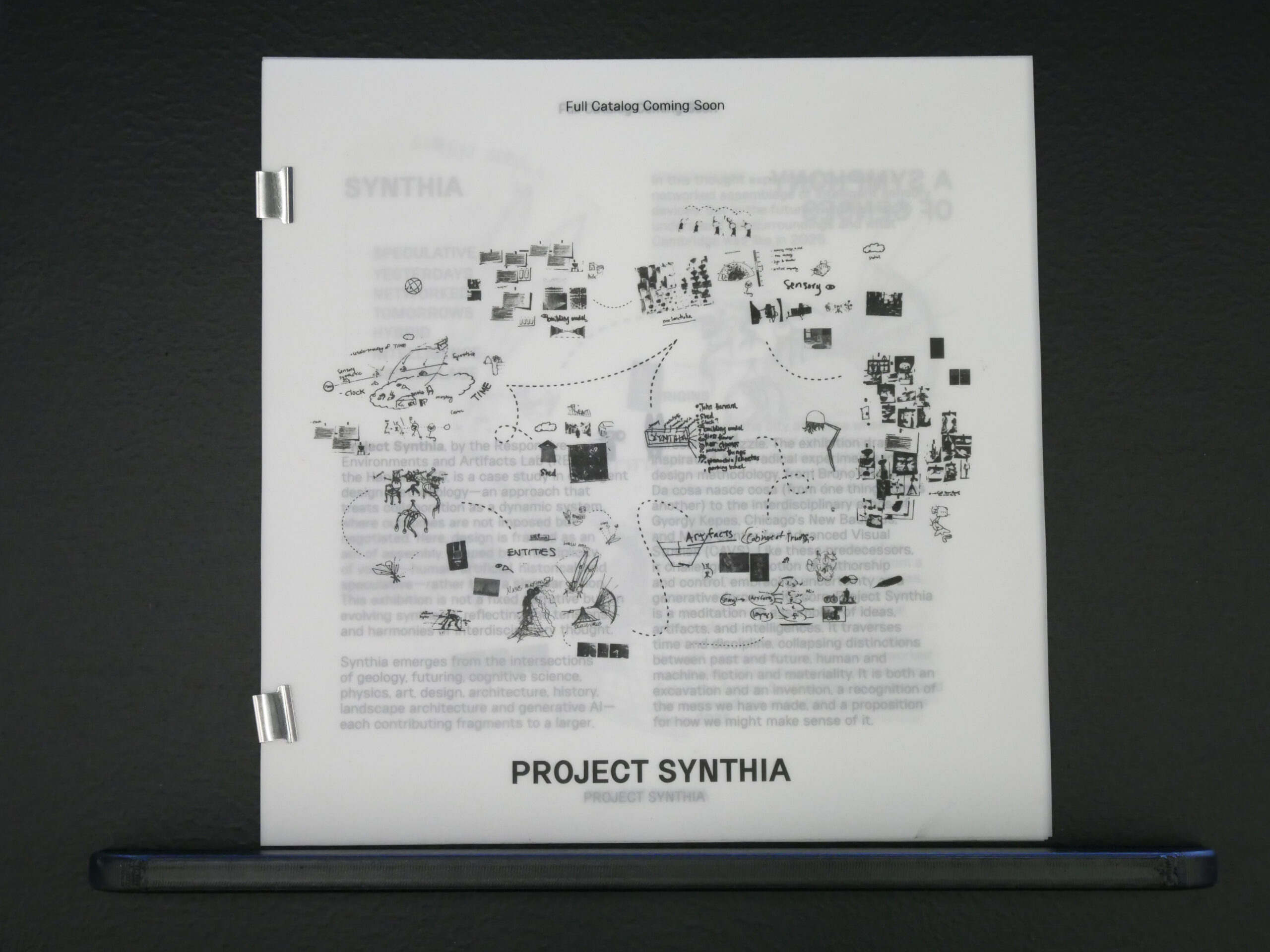
At its core, Project Synthia is a meditation on the assembly of ideas, artifacts, and intelligences. It traverses time and discipline, collapsing distinctions between past and future, human and machine, fiction and materiality. It is both an excavation and an invention, a recognition of the mess we have made, and a proposition for how we might make sense of it. The project was developed as an experimental assemblage of perspective, expertise, and technology. The project stays in the unsettled space of play, co-creation, and contradiction. Here, we found surprising new directions and ways of working, materializing now, in a place of speculative imagination and functional resolution.
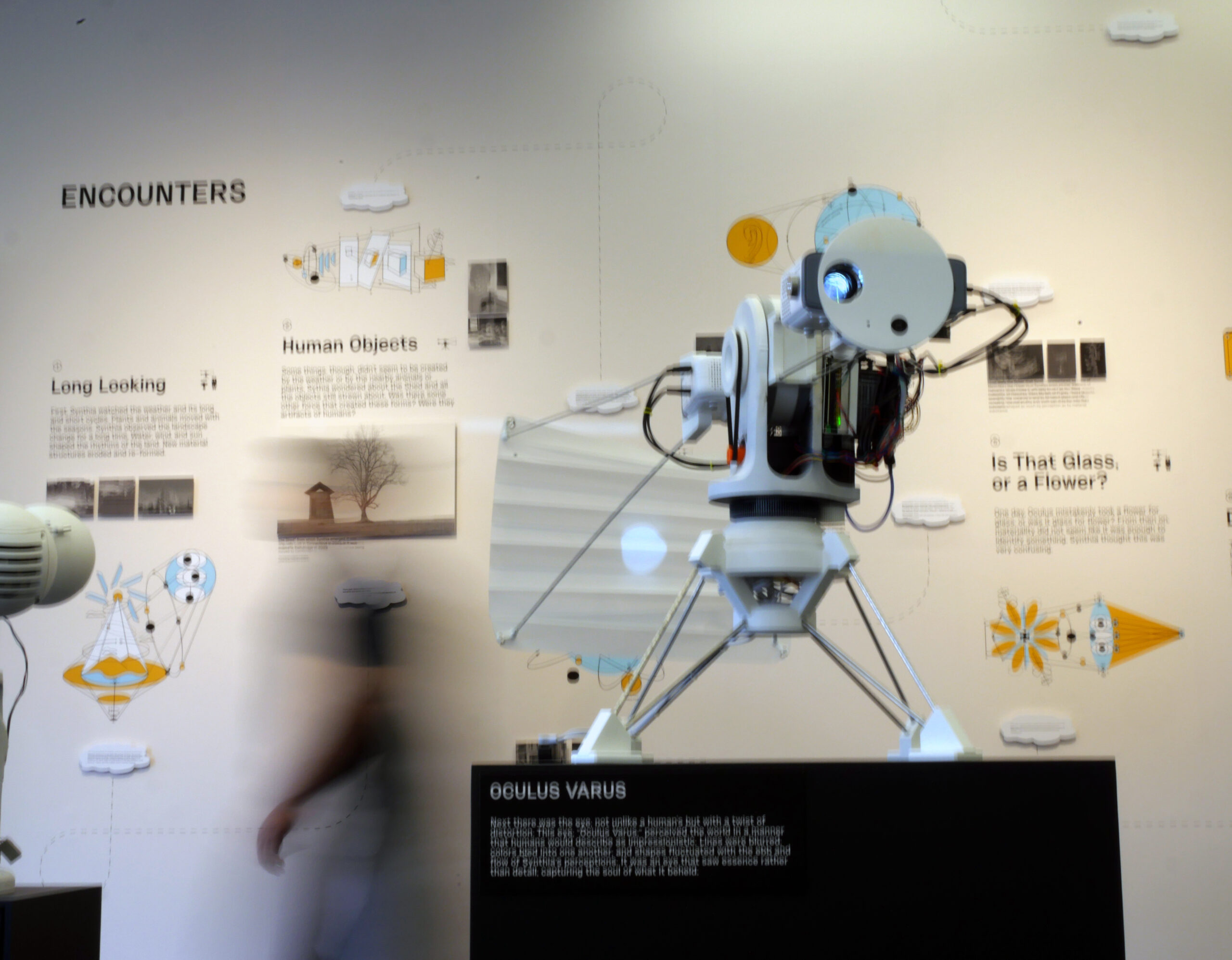
This approach leaves space for a breadth of outcomes and accepts uncertainty as central to collaboration, play, and iterative practice. As technology enables more voices—human, artificial, historical, and speculative—to contribute to creative production, we need methods that can accommodate these perspectives and check against systemic biases of emerging technologies, averaging of ideas, and the illusion of finality.
Exhibtion Photos
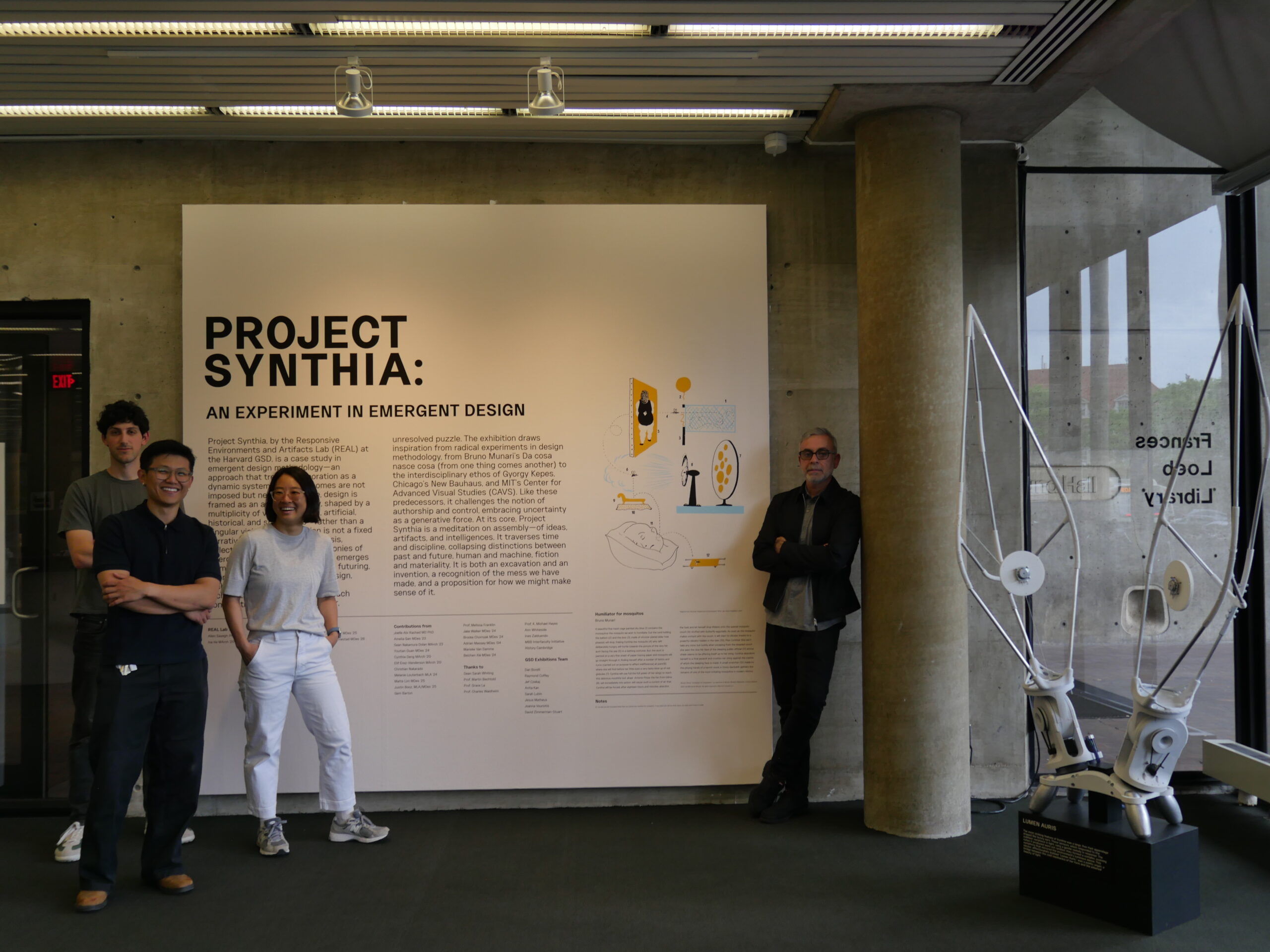
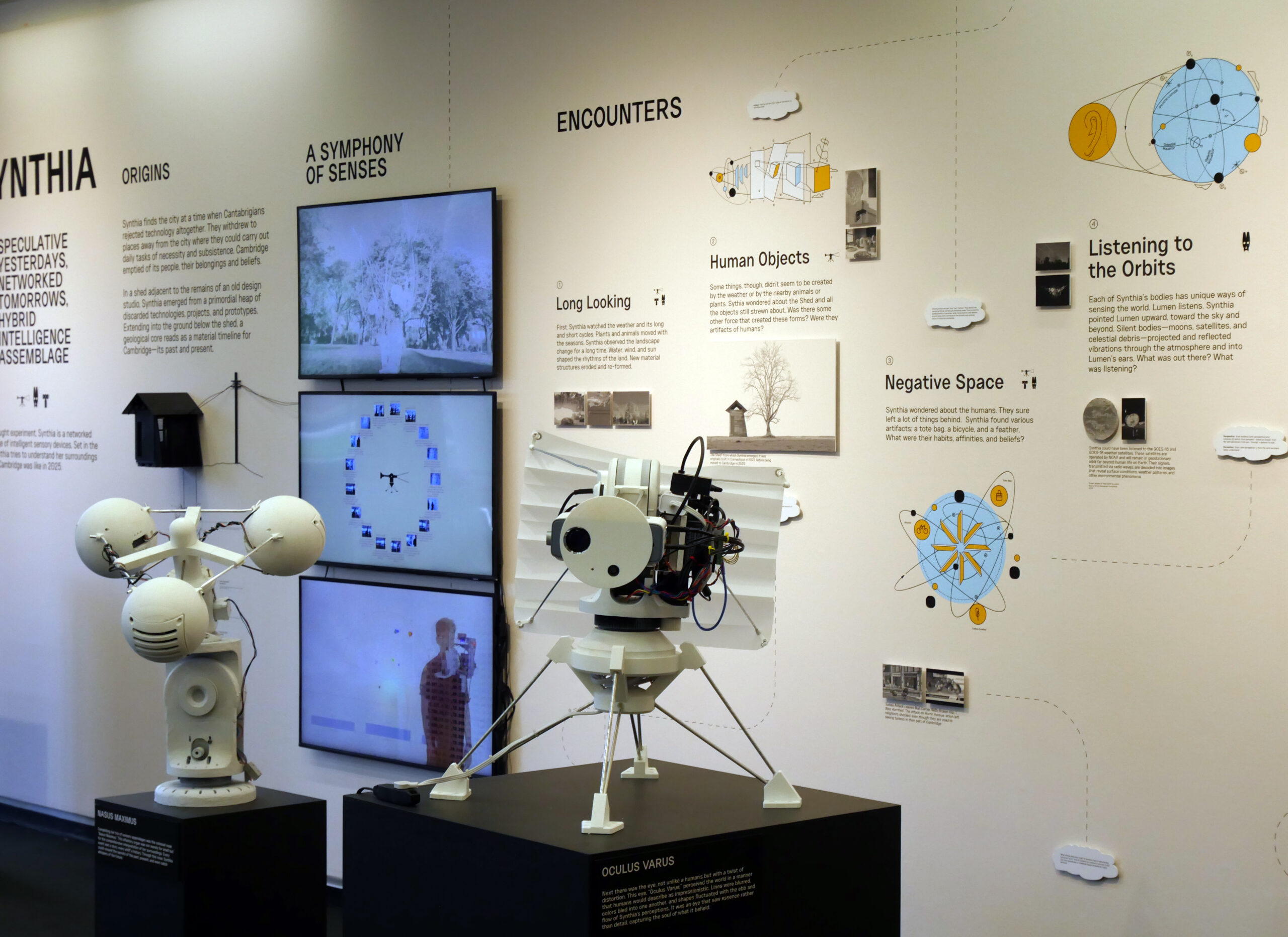
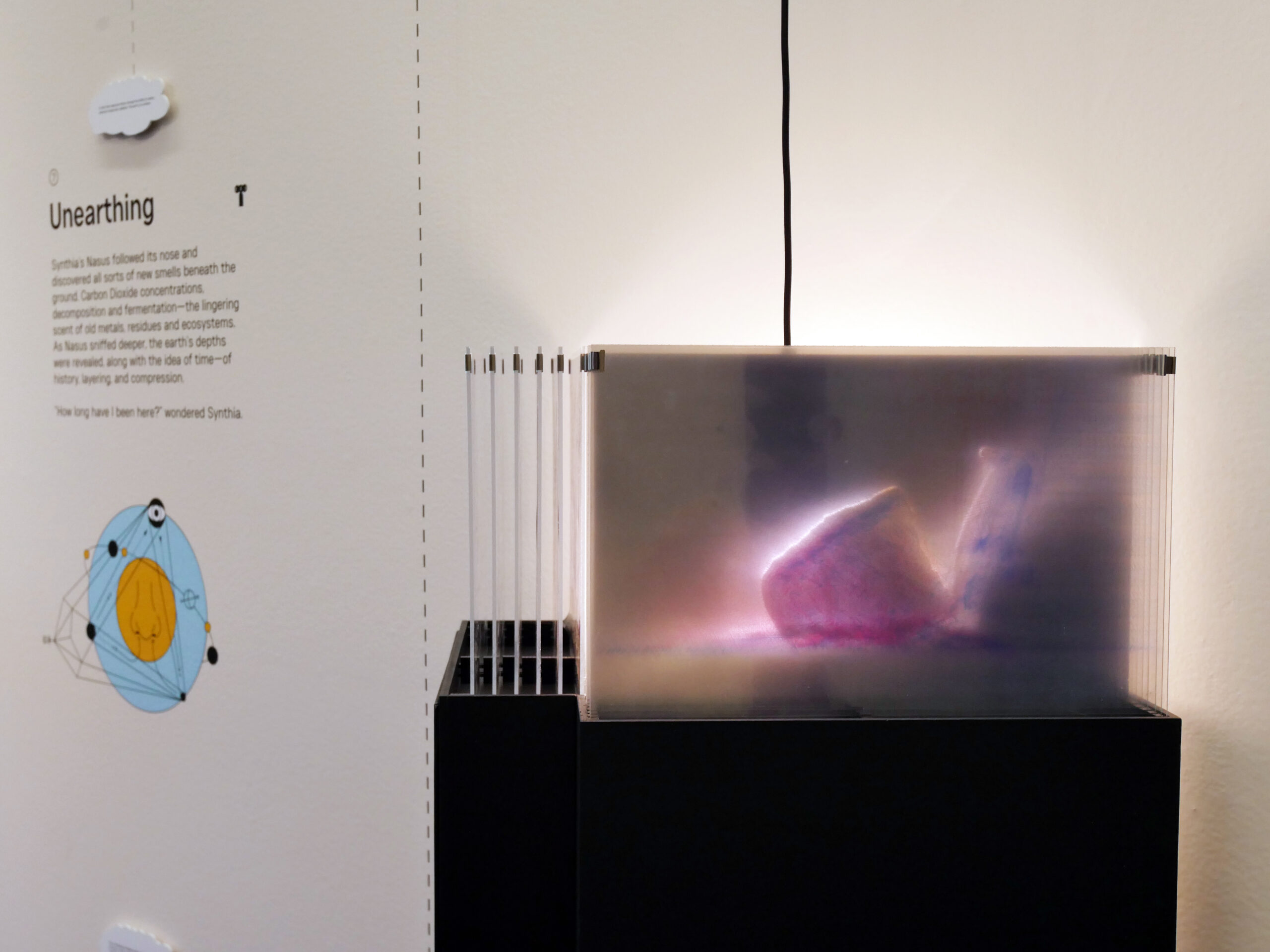
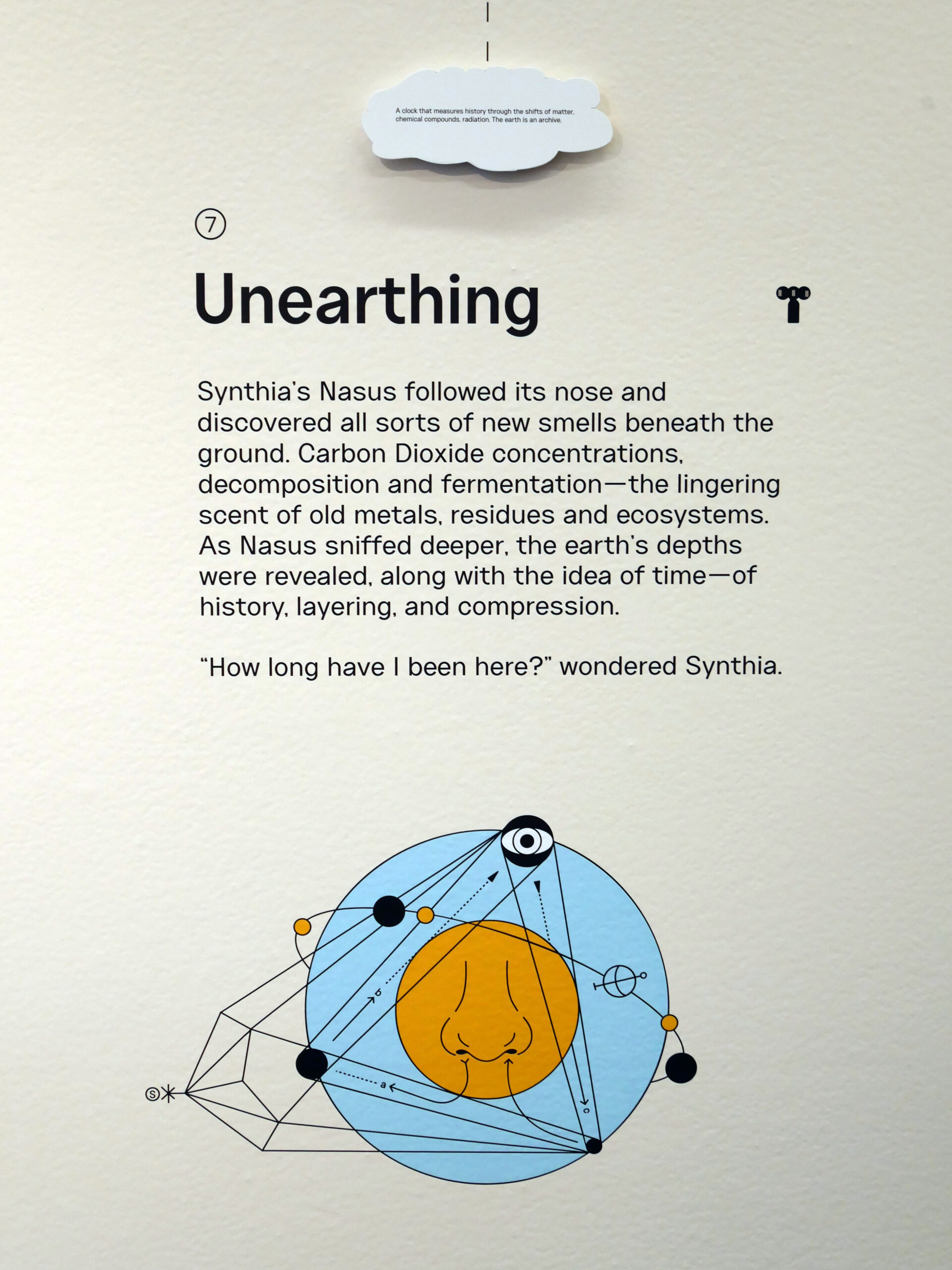

Our collaborators:
- Joelle Abi Rached MD PhD
- Amelia Gan MDes ’23
- Sean Nakamura Dolan MArch ‘23
- Youtian Duan MDes ’24
- Cynthia Deng MArch ‘20
- Elif Erez-Henderson MArch ‘20
- Christian Nakarado
- Melanie Louterbach MLA ‘24
- Matte Lim MDes ’25
- Justin Booz, MLA/MDes ’25
- Gem Barton
- Prof, Melissa Franklin
- Jake Walker MDes ‘24
- Brooke Chornyak MDes ’24
- Adrian Massey MDes ‘04
- Marieke Van Damme
- Beichen Xie MDes ‘24
